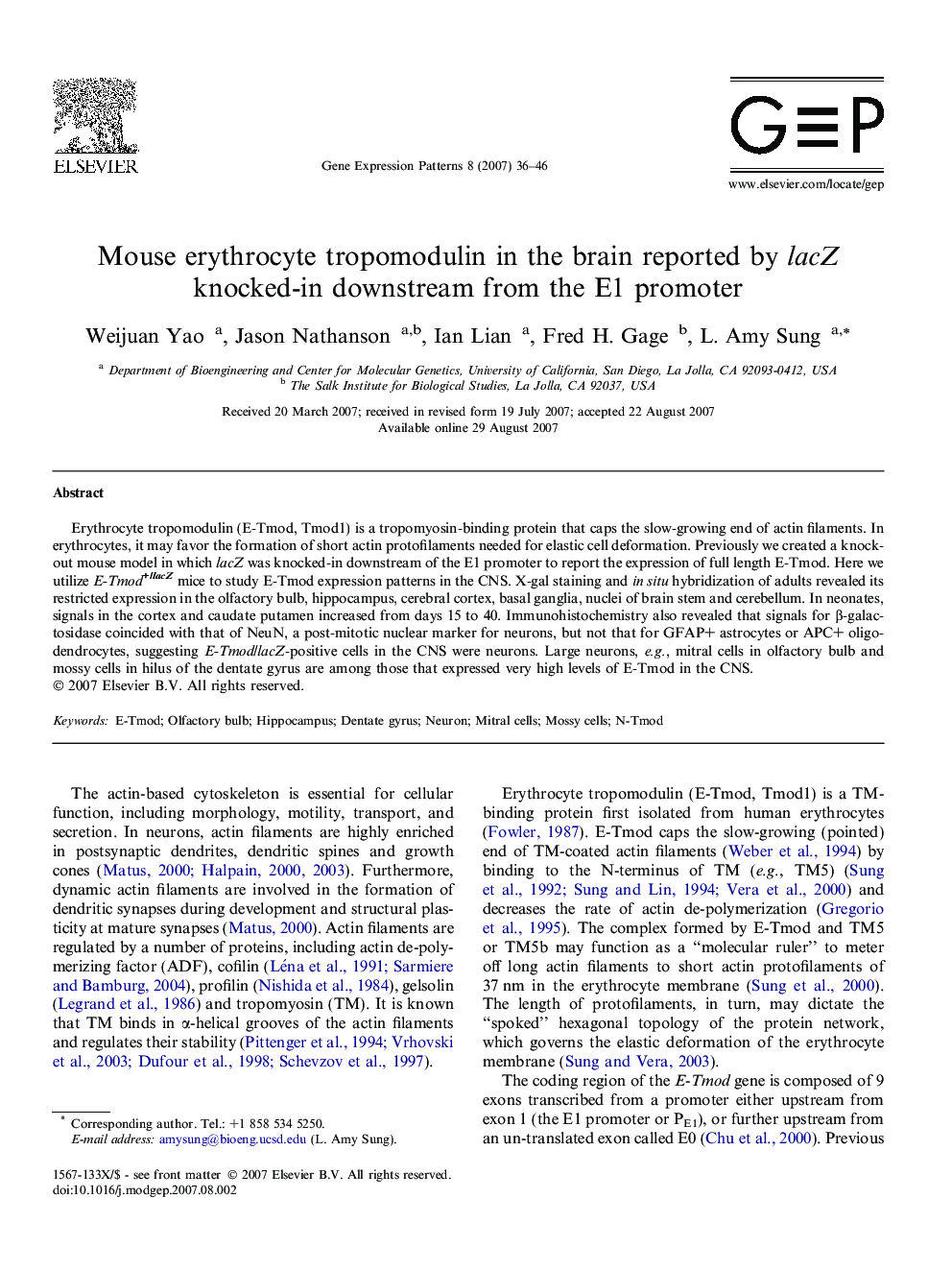| Article ID | Journal | Published Year | Pages | File Type |
|---|---|---|---|---|
| 2182140 | Gene Expression Patterns | 2007 | 11 Pages |
Abstract
Erythrocyte tropomodulin (E-Tmod, Tmod1) is a tropomyosin-binding protein that caps the slow-growing end of actin filaments. In erythrocytes, it may favor the formation of short actin protofilaments needed for elastic cell deformation. Previously we created a knockout mouse model in which lacZ was knocked-in downstream of the E1 promoter to report the expression of full length E-Tmod. Here we utilize E-Tmod+/lacZ mice to study E-Tmod expression patterns in the CNS. X-gal staining and in situ hybridization of adults revealed its restricted expression in the olfactory bulb, hippocampus, cerebral cortex, basal ganglia, nuclei of brain stem and cerebellum. In neonates, signals in the cortex and caudate putamen increased from days 15 to 40. Immunohistochemistry also revealed that signals for β-galactosidase coincided with that of NeuN, a post-mitotic nuclear marker for neurons, but not that for GFAP+ astrocytes or APC+ oligodendrocytes, suggesting E-Tmod/lacZ-positive cells in the CNS were neurons. Large neurons, e.g., mitral cells in olfactory bulb and mossy cells in hilus of the dentate gyrus are among those that expressed very high levels of E-Tmod in the CNS.
Related Topics
Life Sciences
Biochemistry, Genetics and Molecular Biology
Cell Biology
Authors
Weijuan Yao, Jason Nathanson, Ian Lian, Fred H. Gage, L. Amy Sung,
